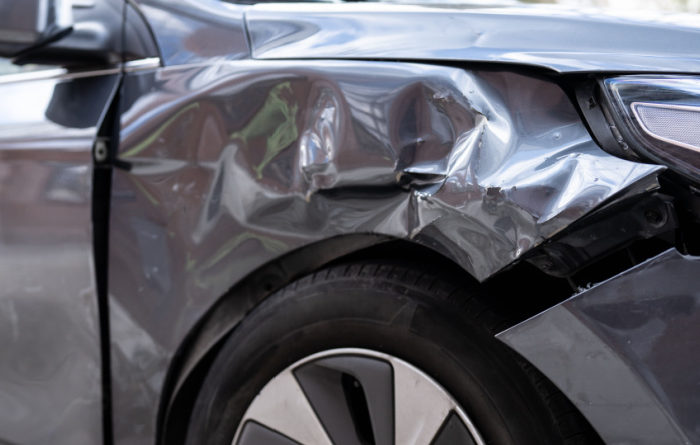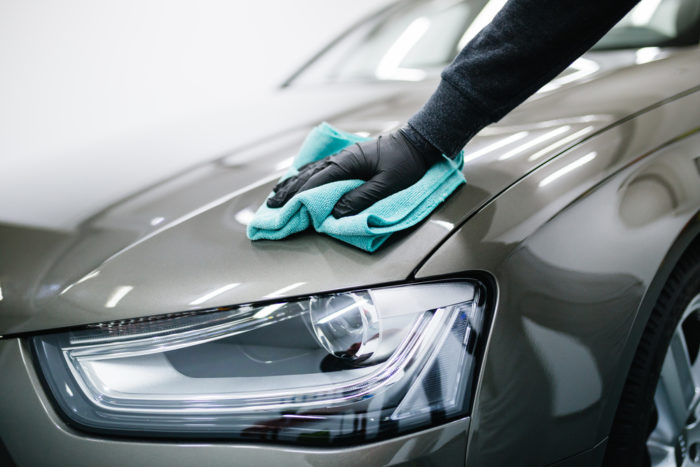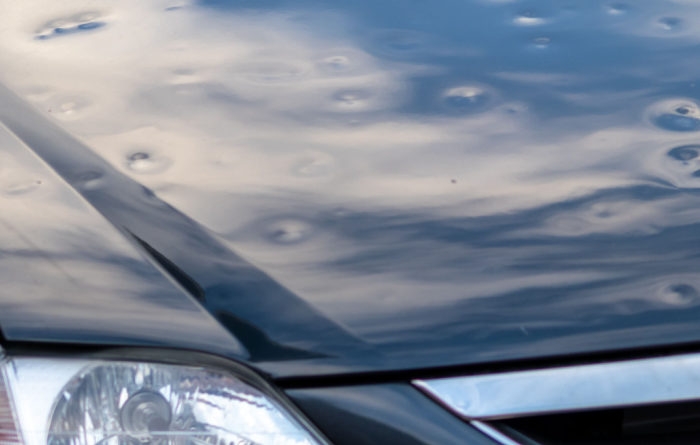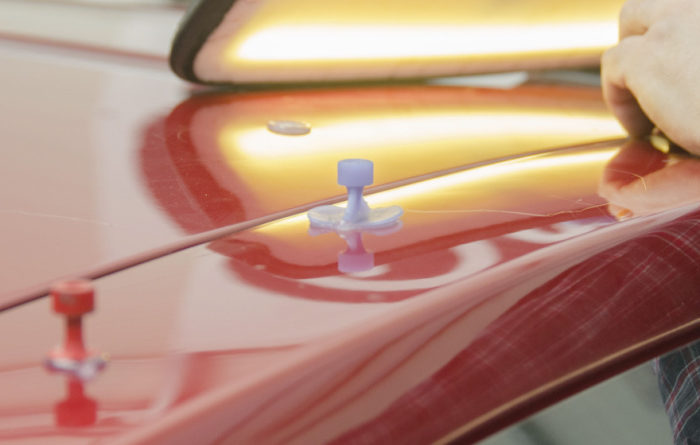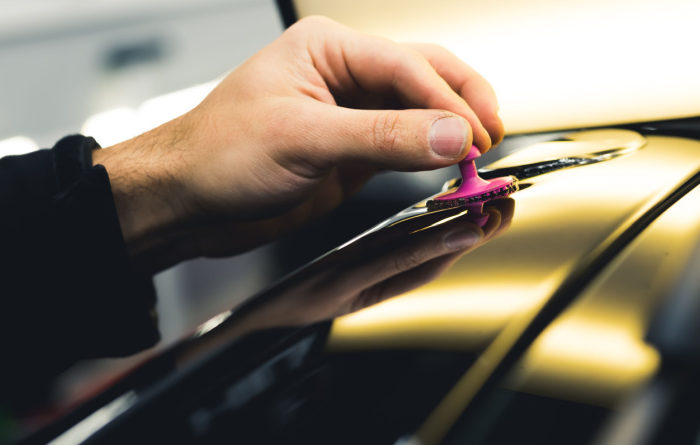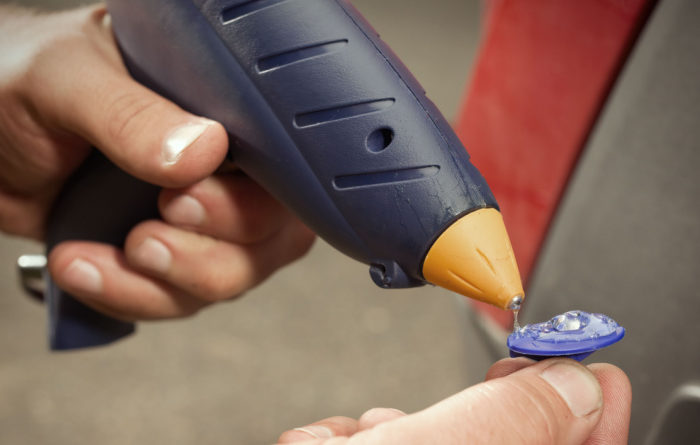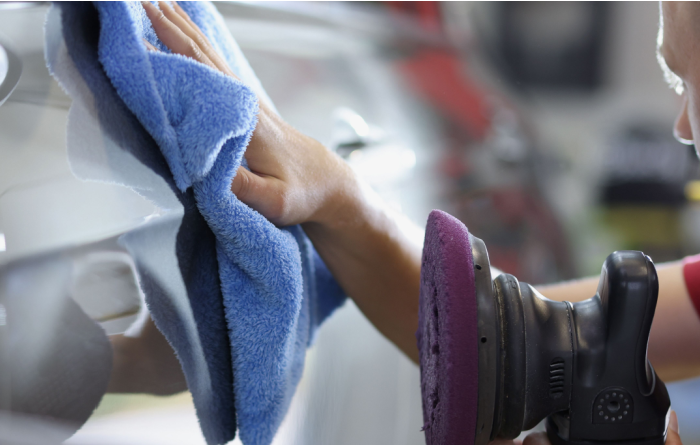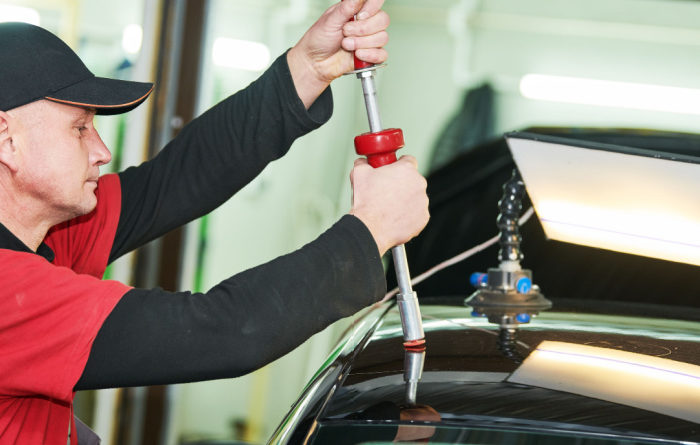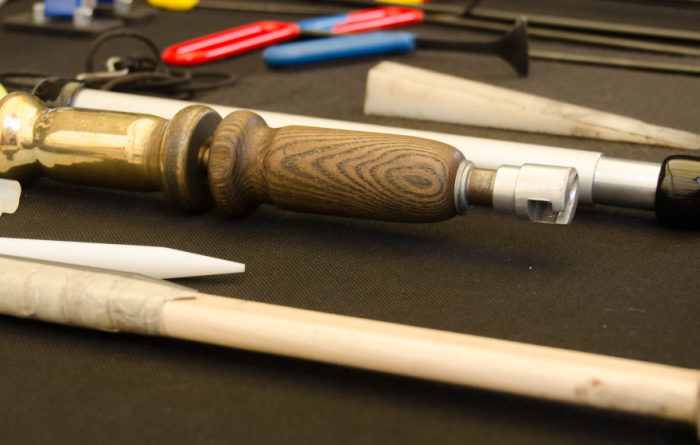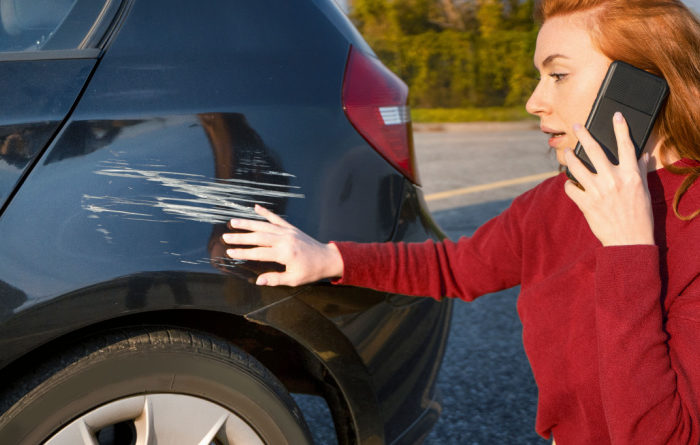The hardest dents to repair with PDR techniques are typically large, deep, or complex ones requiring more extensive reshaping and repair.
To prepare for PDR, it is important to thoroughly clean and dry the area around the dent and to provide the PDR technician with clear access to the affected area.
You can use several methods to get hail dents out of a car hood, though the best method often depends on the extent of the damage. Some minor dents can be handled with simple DIY methods, while others may require…
The advantage of PDR is that it can be an effective and affordable method for removing small to medium-sized dents from a vehicle without damaging the paint, which can help to maintain the vehicle’s value.
Boiling water can be used to soften the metal and make it more pliable, which can make it easier to remove small dents. However, it is generally not an effective method for larger or more complex dents.
Specialized PDR glue is used to attach pulling tabs to the surface of the vehicle for certain PDR techniques. The glue is designed to be strong enough to pull out the dent, but not damage the paint.
Isopropyl alcohol is commonly used in PDR to clean the surface of the vehicle before and after dent repair.
No, PDR is a method for removing dents from a vehicle without damaging the paint.
Dent removal kits can be effective for very small dents, but for larger or more complex dents, professional PDR services may be required.
No, PDR is a method for removing dents from a vehicle without damaging the paint. Scratches may require touch-up paint or more extensive repair methods.


